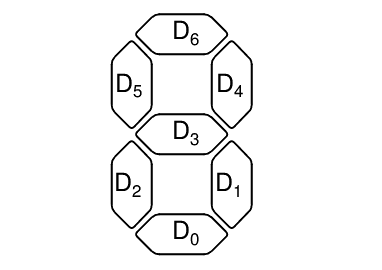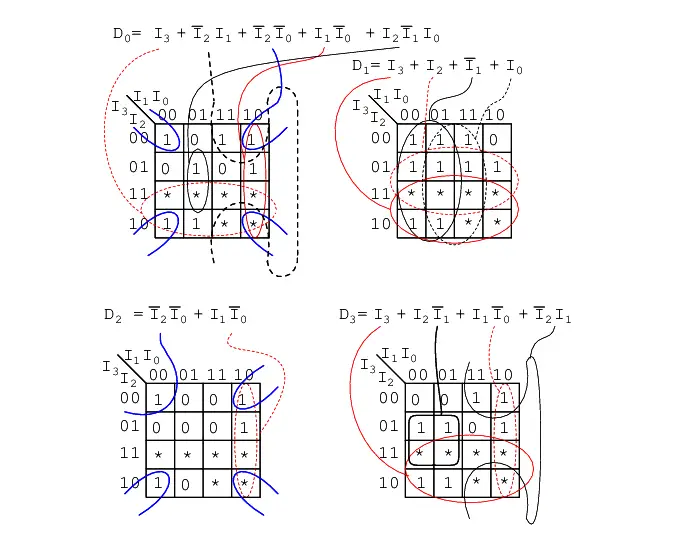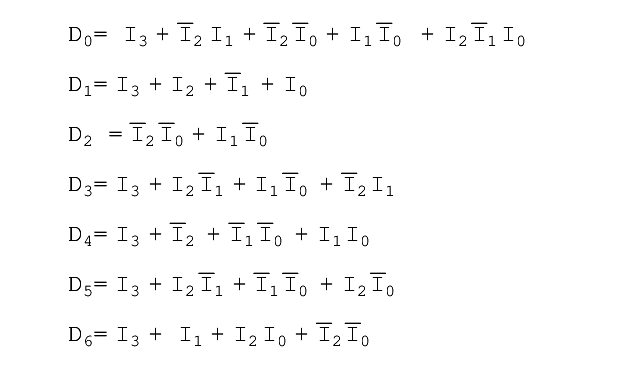An encoder is a circuit that changes a set of signals into a code.
2-to-1 line Encoder
Let’s begin making a 2-to-1 line encoder truth table by reversing the 1-to-2 decoder truth table.
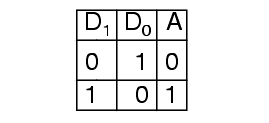
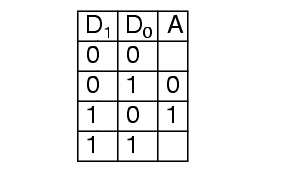
Combinational Encoder Design
A more useful application of combinational encoder design is a binary to 7-segment encoder. The seven segments are given according
Our truth table is:
Deciding what to do with the remaining six entries of the truth table is easier with this circuit. This circuit should not be expected to encode an undefined combination of inputs, so we can leave them as “don’t care” when we design the circuit.
The equations were simplified with karnaugh maps.
Encoder Equation
The collection of equations is summarised here:
Encoder Circuit
The circuit is:
Encoder Ladder Diagram
And the corresponding ladder diagram:

